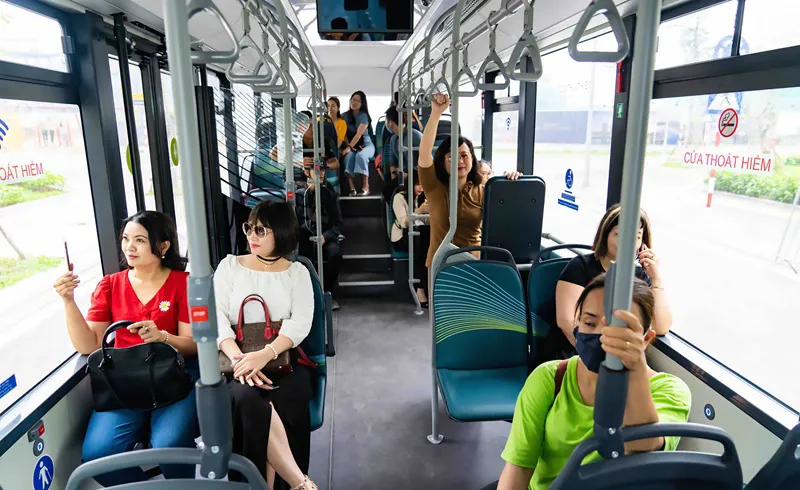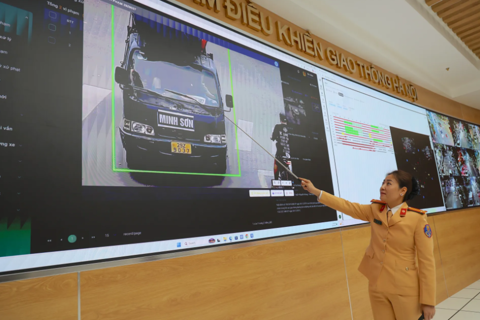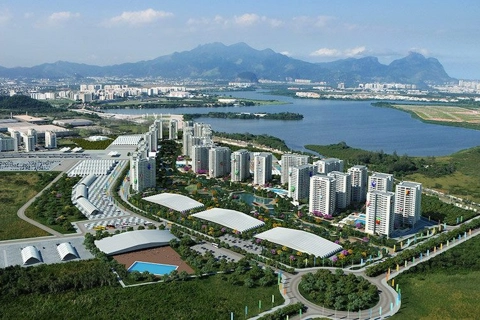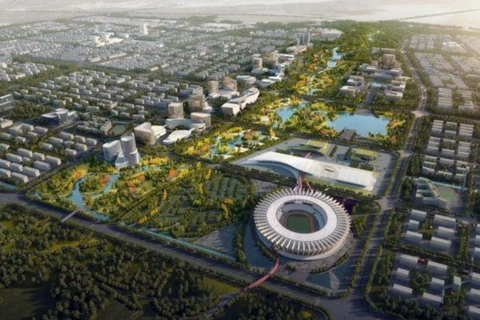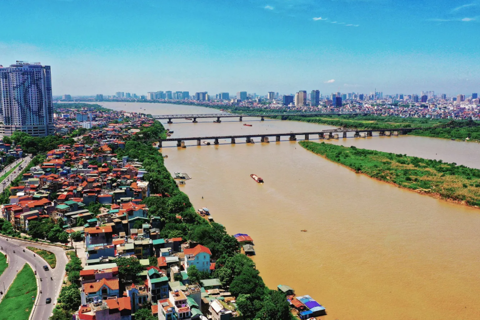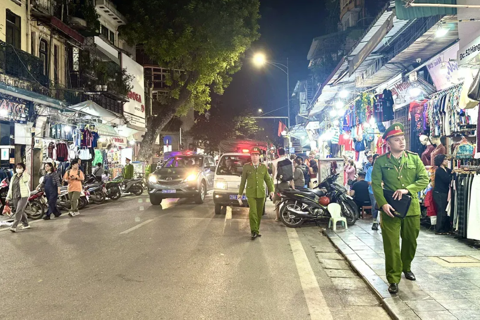Hanoi works to make bus system greener
The capital is committed to protecting the environment and is working to develop a green public transport network.
Hanoi has set a target for 100% of new buses to be powered by electricity or green energy such as liquefied natural gas (LNG) or compressed natural gas (CNG) from 2025, effectively contributing to environmental protection, said Deputy Director of the Hanoi Department of Transport Do Viet Hai.
He told The Hanoi Times that green energy buses are an inevitable trend in the world, including big cities like Hanoi. "The capital currently has 132 subsidized bus lines operating more than 2,000 buses, of which 282 run on electricity and clean compressed natural gas (CNG), accounting for nearly 14% of the fleet. To date, the electric bus fleet has helped reduce carbon emissions by 36,000 tons."
Hai said the city began considering the introduction of nine more electric bus routes in April this year. Although many challenges remain, Hanoi is on the right track to introduce green public transport. Using green vehicles helps protect the environment and creates a strong incentive for people to gradually leave their private vehicles at home.
An electric bus operated by Vinbus Ecological Transport Service Co., Ltd in Hanoi. Photo: Nguyen Minh/The Hanoi Times |
The official emphasized the need to train more quality human resources with professionalism in passenger service for the five new bus lines that are expected to be operational in early 2025.
Tran Dinh Tien, Head of the Operation Planning Facility under the Hanoi Transport Management and Operation Center, said the city has focused on developing public transport in recent years.
In late 2021, Hanoi's Department of Transportation launched the first three electric bus routes, the first of its kind in the country. By the end of 2023, the city had 10 electric bus lines. The total number of clean electric bus routes is 20, of which 10 powered by electricity and 10 by CNG.
He emphasized that in the near future, Hanoi's entire bus network will be electrified and run on clean energy. "The electric bus routes have been supported by passengers. During rush hours, the capacity exceeds 100%".
Tien added that the city's bus network has grown in both performance and revenue. Specifically, in the first nine months of 2024, the bus network transported over 180 million passengers, with total revenue estimated at around VND250 billion (US$9.8 million), an increase of 3.2% year-on-year.
Nguyen Thi Hoa Dung, a thirty-year-old resident of Nam Tu Liem District in Hanoi, said that she personally supports electric buses because after using many means of transportation, she finds electric buses to be the most advantageous.
"There is now a big difference in service and vehicle quality between electric buses and gas buses. The operation of electric buses is smooth and quiet. I no longer feel carsick when I ride an electric bus. The drivers and their assistants are very friendly and polite, and they enthusiastically help passengers, especially the disabled and the elderly," Dung told The Hanoi Times.
Specific roadmap needed
According to Nguyen Cong Nhat, General Director of Vinbus Ecological Transport Service Co, Ltd, an electric bus operator, the benefits of reducing pollution are obvious to both passengers and other drivers.
A Vinbus electric bus on Ngoc Thuy Street in Hanoi's Long Bien District. Photo: Tuyen Parafu |
Nhat stressed that Hanoi needs a detailed roadmap for educating people and building infrastructure to develop green transport.
The Action Program on Green Energy Conversion and Reduction of Carbon and Methane Emissions from the Transport Sector was approved by the Vietnamese government on July 22, 2022, with the aim of developing a green transport network and achieving net-zero emissions by 2050, Nhat added.
For Hanoi, the program has set a specific roadmap to have at least 50% of Hanoi's vehicles run on electricity and green energy by 2030. By 2050, 100% of buses and taxis will use electricity or other green energy.
"In the next 30 years, the government would invest heavily in the infrastructure of fueling stations for green buses to make them convenient for operators," Nhat told The Hanoi Times.
He called for more favorable policies to expand the fleet of green energy buses, which are much more expensive than gasoline and diesel vehicles.
"The investment cost of electric and green energy buses is 2-4 times higher than diesel buses, which is a big challenge for operators, not to mention the investment in infrastructure and charging stations," he said.
Space inside a green bus. Photo: Vinbus |
Nhat noted that measures to curb private vehicles must be taken to encourage people to use public transport more often, thus ensuring the economic efficiency of operators. "Agencies and businesses in Hanoi must take the lead in the movement to abandon gas-powered vehicles in favor of bicycles, electric buses, sky trains, electric motorcycles, and cars," he said.
Greening up bus system ahead of schedule
According to Deputy Director Do Viet Hai, the Government has asked Hanoi to switch entirely to green energy buses by 2050. “However, the capital city is taking steps to achieve the goal 15 years ahead of the deadline,” he said.
The official added that the Hanoi Department of Transport has been working with 11 bus operators in the city, and all of them have shown support and determination to carry out the project.
"We know that the goal of completing the project 15 years ahead of schedule is a tough one. Among the biggest challenges are finding capital, which is huge, and the supply of spare parts," Hai told The Hanoi Times.
He emphasized the need for public authorities to provide policy and capital support to bus service suppliers, as well as efforts to promote the growth of electric vehicle aftermarket facilities.
The deputy director suggested that in addition to importing spare parts, the city should increase domestic production, while carefully planning infrastructure to ensure that electric buses can operate smoothly as the network expands.
Hai also noted that to ensure the quality of the service after the conversion, Hanoi will seek businesses that meet the requirements in both vehicles and service quality.

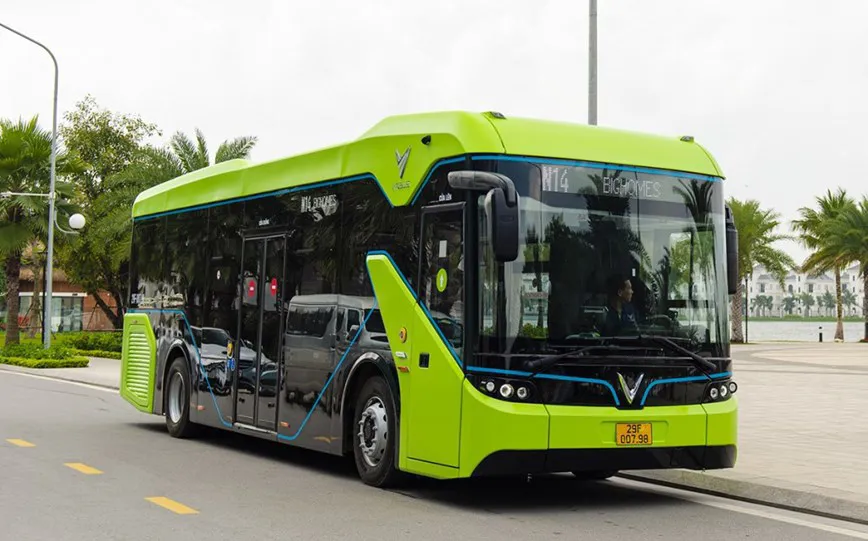
.jpeg)
